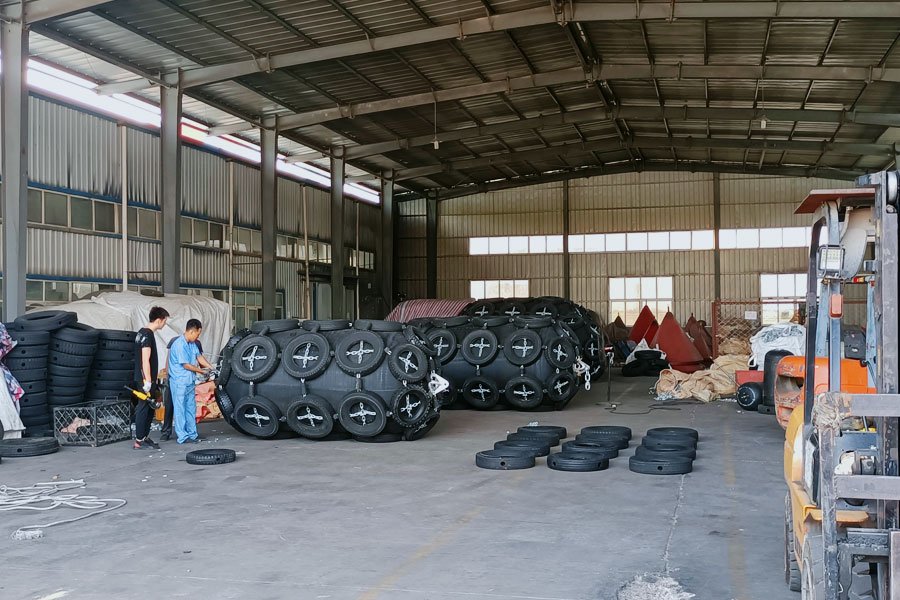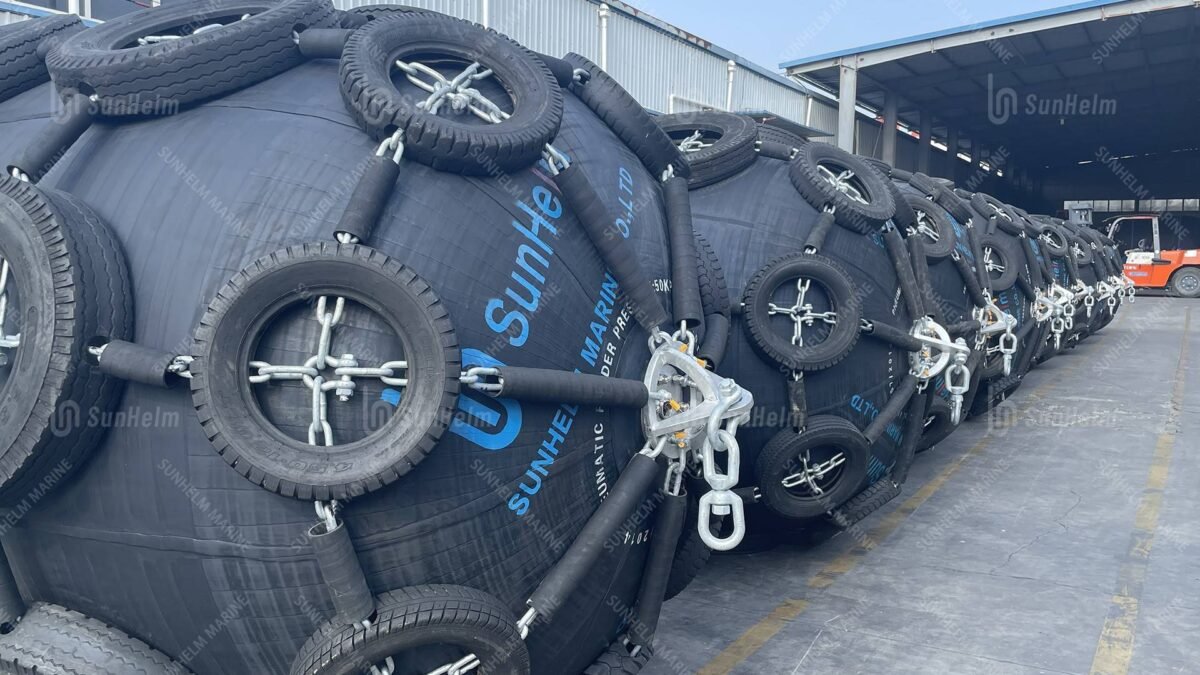The Importance of Installing Tire Nets on Pneumatic Fenders
Imagine a busy port where vessels dock daily for loading or offloading. One small mistake—like a poorly protected fender—can lead to hull damage or serious delays. That’s where the pneumatic fenders tire net become essential. It doesn’t just look rugged; it acts as a critical barrier that absorbs impacts, distributes energy evenly, and prevents direct abrasion on the rubber surface.
At Sunhelm, we’ve seen firsthand how a well-installed tire net keeps operations smooth—even in rough conditions. That’s why learning how to install it properly is more than maintenance; it’s smart protection.
Step-by-Step: How to Install a Tire Net on Pneumatic Fenders

1. Prepare the Fender and Tire Net
Start by placing the deflated or semi-inflated pneumatic fender on a flat, clean surface. Next, lay the tire net next to the fender. Check that all chains are untangled and that the tires align properly.
👉 Tip: Clean the area to avoid sharp objects that could damage the rubber.
2. Position the Horizontal Chains
Drape the horizontal chains evenly across the length of the fender. These chains serve as the framework for the net.
3. Weave the Vertical Chains
Next, weave the vertical chains over and under the horizontal ones. Doing this creates a secure mesh that keeps the tires in place.
👉 This mesh should follow the fender’s curvature, ensuring full coverage.
4. Insert Rubber Sleeves
To protect the fender’s surface from wear, slide rubber sleeves onto the chains where they touch the rubber. This extra layer prevents metal-to-rubber contact, reducing the risk of abrasion.
5. Mount the Tires
Now it’s time to mount the tires. Secure each tire where the horizontal and vertical chains cross. Make sure they face outward to absorb impact effectively.
👉 Check that all tires are spaced evenly to distribute force during use.
6. Secure the Net to the Fender Flange
Attach the ends of the chain net to the fender’s flange using strong shackles and swivels. This ensures that the net stays tight during operation and doesn’t slip or sag.
7. Inflate and Adjust
Inflate the fender to its working pressure (usually 0.05 MPa for standard sizes). As the fender expands, inspect the net to ensure it remains snug. Adjust chains as needed for a uniform appearance and maximum performance.
8. Final Inspection
Walk around the fender and double-check all shackles, sleeves, and tires. Make sure nothing feels loose or out of place. This final check helps you avoid failures later at sea.

Why It Matters: Tire Nets Save You Time and Money
Tire nets might look simple, but they play a massive role in extending the life of your pneumatic fenders. By absorbing impacts and shielding against direct contact, they reduce repair frequency and help avoid downtime. At Sunhelm, we’ve helped countless marine operators increase their fender lifespan simply by ensuring correct tire net installation.
Featured Snippets
What is a tire net on a pneumatic fender?
A tire net is a mesh of tires and chains wrapped around a pneumatic fender to protect it from abrasion and impact.
Why do pneumatic fenders need tire nets?
Tire nets absorb energy, protect the rubber body, and extend the service life of the fender—especially in high-contact zones like ports and terminals.
How can I install a tire net correctly?
Start by laying out the net, wrapping the chains, inserting rubber sleeves, attaching tires, and securing everything to the flange. Always do a final inspection before use.
FAQ
Q: Can I add a tire net to an existing fender?
Yes! You can retrofit most sling-type pneumatic fenders with a tire net. This upgrade adds extra protection for harsher marine conditions.
Q: How often should I check the tire net?
We recommend monthly inspections, especially in saltwater environments. Look for rust, chain tension issues, or damaged tires.
Q: What’s the best material for the chains?
Galvanized steel is the standard for corrosion resistance. For long-term use in highly corrosive waters, consider stainless steel components.
Q: Do all pneumatic fenders come with tire nets?
No, not all do. Many fenders come as sling type. For heavy-duty use, tire net versions (CTN fenders) are the preferred choice.
Final Thought
If your fender isn’t protected, your ship isn’t either. Installing a tire net properly takes only a short time—but it adds years of durability to your fender. At Sunhelm, we supply fully assembled fenders or separate tire net kits for easy retrofitting. Don’t let your equipment take the hit—let the tire net do its job.
👉 Contact Sunhelm today to learn more about tire net options, installation guidance, or custom fender packages.


